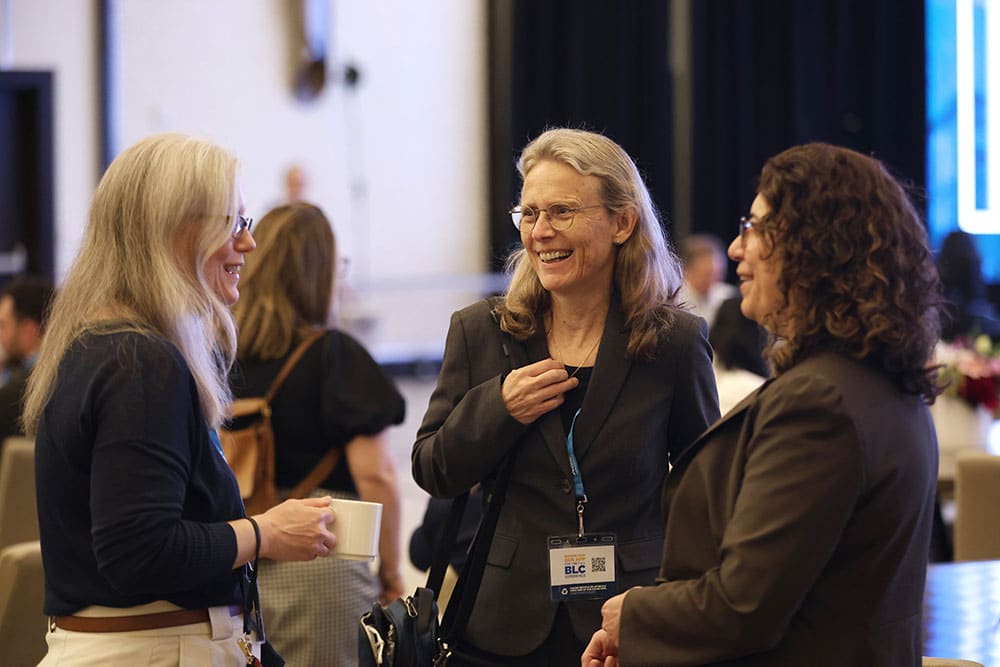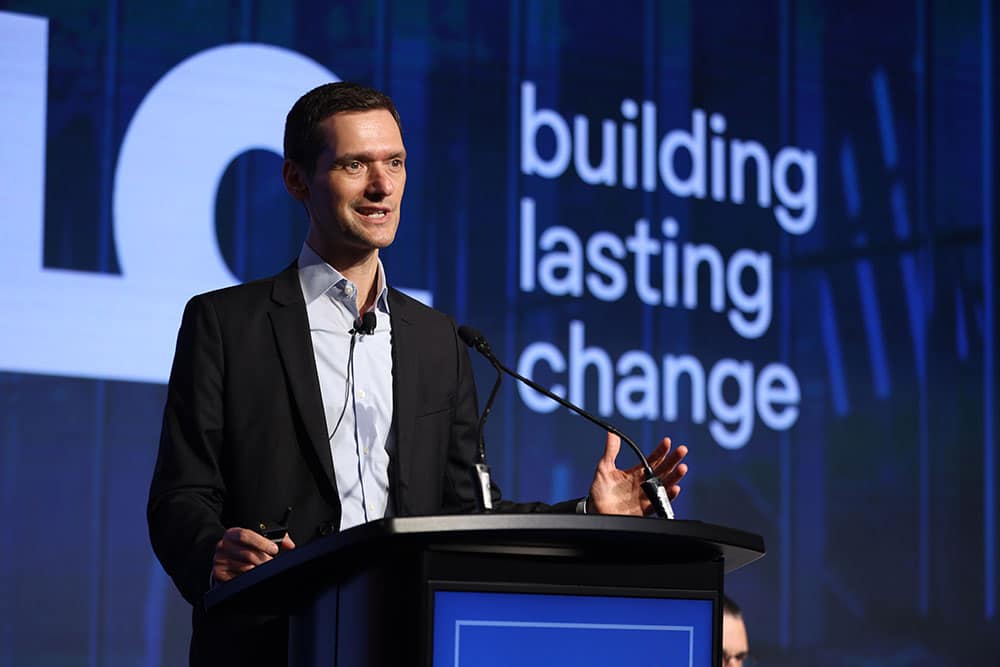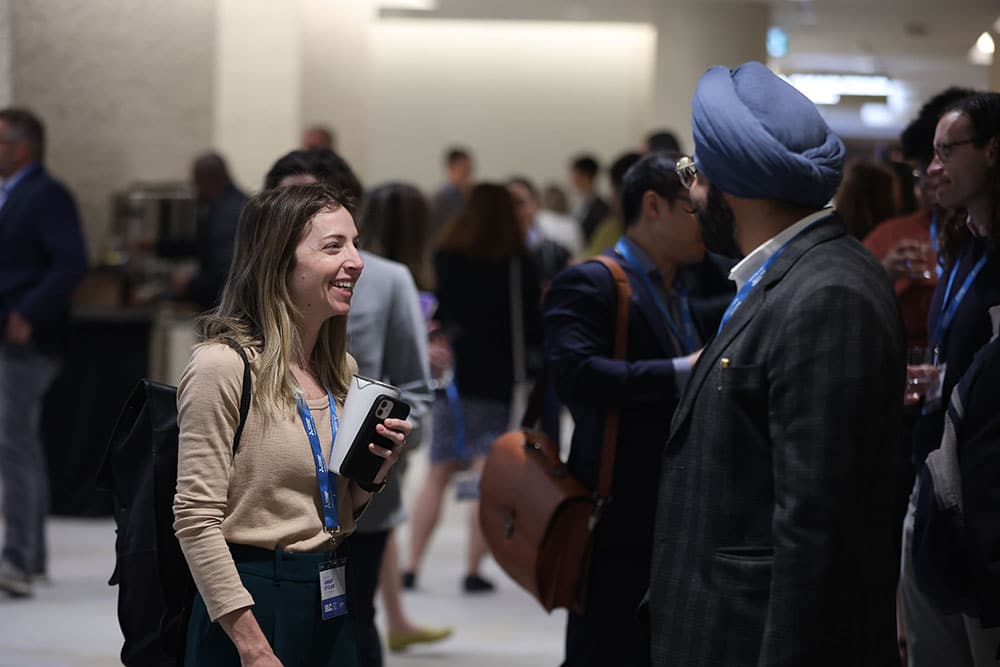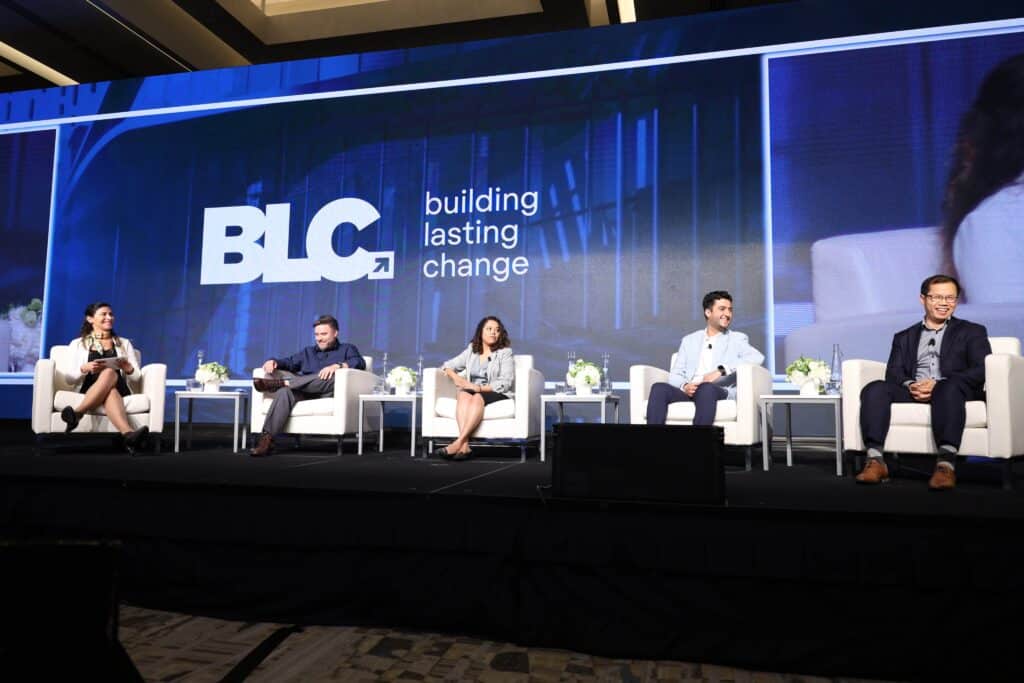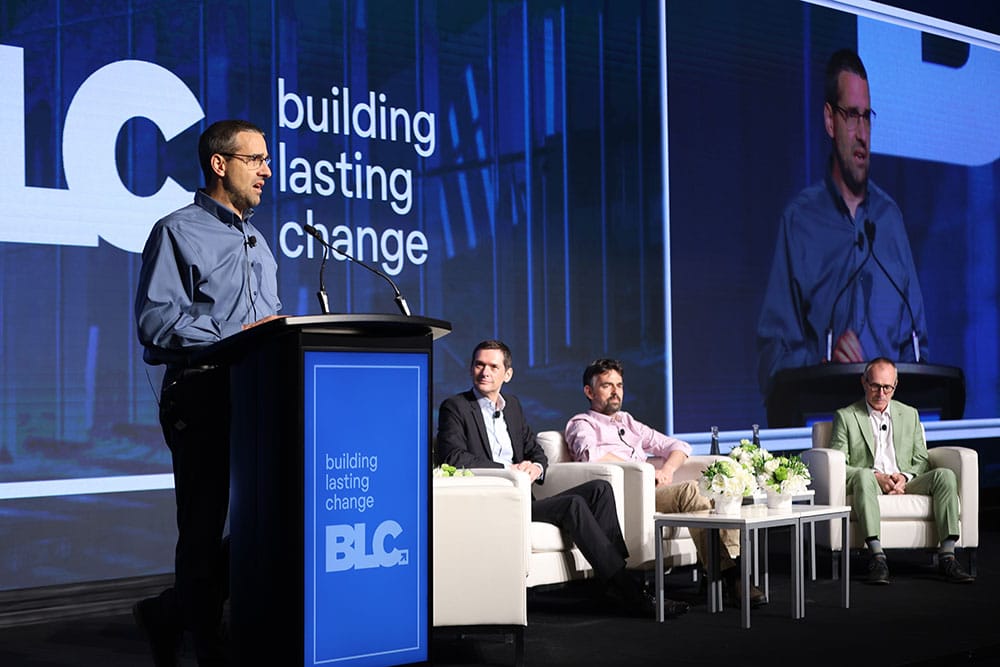Conversations at BLC dominated by carbon
CAGBC Staff on June 8, 2023
- Theme
- Green Building
- Zero Carbon
It was wonderful to see so many of you in person at this year’s Building Lasting Change (BLC), held in Vancouver on June 1-2. As always, getting together with green building peers recharges us for the challenges and opportunities ahead.
The urgency of our mission was repeated by many of the panelists. During BLC, it is interesting to reflect on how the conversation has evolved over the years, moving from “saving energy” to “reducing operational carbon,” “don’t forget embodied carbon,” and “the goal is zero carbon.”
While it is difficult to choose favourites, two BLC sessions stand out.
Harmonizing WBLCA for Better Results
In “Harmonizing WBLCA for Better Results,” the self-titled “embodied carbon nerds” – Zahra Teshnizi (City of Vancouver), Anthony Pak (Priopta), Navid Hossaini (Recollective), Navisa Jain (Ellis Don), and Rob Cooney (Treasury Board of Canada Secretariat) – delivered an impassioned panel reminding us several times that “we cannot let perfection be the enemy of the good.” While they acknowledged the shortcomings in the data supporting whole building life cycle assessment, and the need to improve the tools and processes, they noted that it is important that we act now.
As a sector, we need to use what data we have and let that inform our improvements. We were reminded that embodied carbon will be incorporated into the National Energy Code for Buildings in 2030 and we have to be prepared for this. The City of Vancouver was acknowledged as a leader, with the new requirements on reporting embodied carbon coming next month in July, and performance requirements by 2025.
Carbon as a Metric
The “Carbon as a Metric” session highlighted that the City of Montreal is also a leader, with all new buildings to be carbon neutral as of 2025 and all existing buildings by 2040. This was recognized at the Gala’s award ceremony, where André Cazelais, Head of the Ecological Transition and Innovation Department at the City of Montréal, received the Government Leadership Award.
Mark Hutchinson, our VP of Green Building Programs, kicked off the session noting that the assessment of carbon is continuing to evolve, and is top of mind as CAGBC strives to continuously improve the Zero Carbon Building standards. With over 200 projects now registered, participants are providing many insights, and raising great questions.
The session included insights from Anne Svendsen (Special Advisor, Danish Energy Agency), who noted that Denmark will not be further reducing energy consumption targets, but rather emphasizing whole life carbon. A 12 kg CO2e/m2/yr target has been established, incorporating both operational carbon and whole-life-cycle embodied carbon as assessed over a 50-year period. A truly innovative approach!
Iain MacDonald of the National Research Council highlighted that the 2025 version of the code will address operational carbon emissions for the first time, and embodied carbon will be addressed in 2030. He encouraged participants to follow the code development process and provide input.
Iain pointed out that the electrical grids will continue to decarbonize over the next decade. CAGBC notes that most of the carbon intensive grids have likely already reached a point where electrification reduces operational carbon; this should be reflected in the National Inventory Report once the 2021-2023 numbers are published.
Several panelists noted that buildings must emphasize efficiency and management of peak demand if we are to limit the need for additional electricity generation, transmission and distribution infrastructure.
Peter Templeton, President and CEO of the USGBC, GBCI and Arc Skoru, spoke to LEED’s holistic approach, which has always included efficiency and measures to reduce and manage peak demand (e.g., credits for demand response, reducing on-peak demand, and energy storage). LEED’s holistic approach also addresses embodied carbon as well as carbon from transportation, water, waste, and refrigerants. Peter noted that carbon is one of the priority areas for LEED v5 development, which is expected to result in a draft for O+M at Greenbuild this year, and a draft for BD+C by the end of the year. Another priority for LEED v5 is how to address buildings at scale (portfolios).
As always, the great conversations continued in the hallways – where the vitality could be felt as people reconnected and made new contacts. All in all, it was a great event; we hope to see you at BLC next year!
